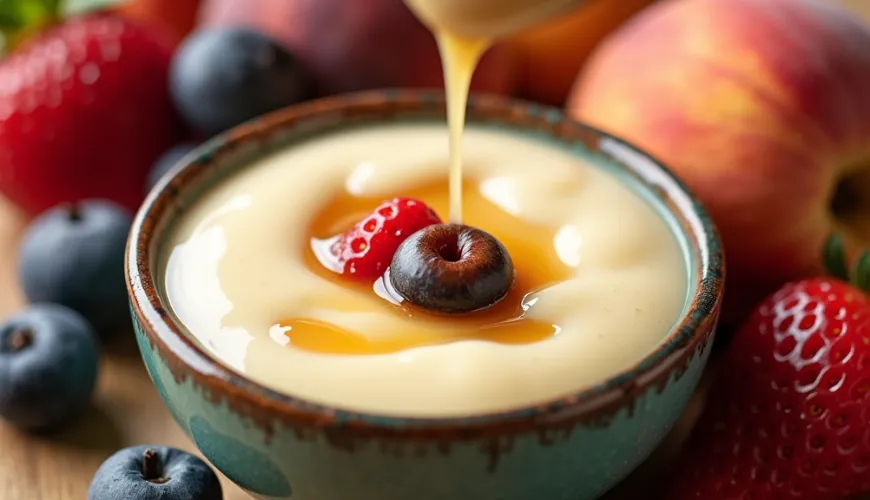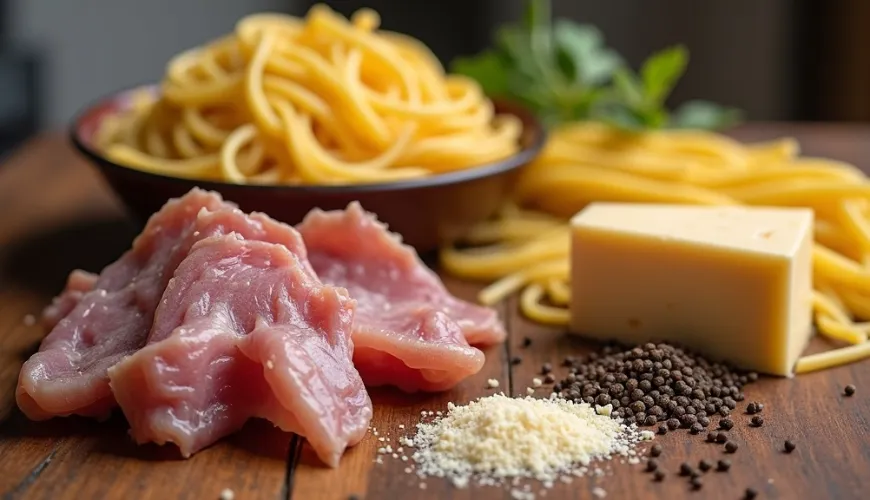
Why You Will Love Pasta alla Gricia and How to Make It at Home

What is Pasta alla Gricia and Why Have Italians Loved It Since the 5th Century?
Italian cuisine is renowned for its simplicity, which hides an unexpected depth of flavors. We all know classics like carbonara, amatriciana, or cacio e pepe, but few realize that nestled among these icons is a somewhat overlooked gem - pasta alla gricia. It's one of the oldest dishes in Roman cuisine, maintaining its authenticity and charm for over a thousand years.
Pasta alla gricia (sometimes referred to in Czech as "těstoviny po gricku") is often labeled as the forebear of carbonara. Without eggs, yet with the same heart of Roman cuisine—consisting of guanciale (cured pork cheek), black pepper, and sheep's cheese pecorino romano. Simple. Hearty. Irresistible.
The Origins of Pasta alla Gricia - A Flavor That Survived the Ages
According to historians, gricia emerged around the 5th century, likely named after the village of Grisciano in the Lazio region. Others believe that the word "gricia" comes from the German "grigio" (gray), possibly referring to the attire of food vendors who supposedly spread this dish through cities like Rome.
What is certain is that spaghetti alla gricia was a favorite among shepherds and farmers. Modest people who couldn't afford fresh ingredients or complicated preparations, yet managed to conjure a dish that would stand proudly on the tables of today's Michelin-starred restaurants.
Due to the absence of eggs and tomatoes (the latter arriving in Europe only in the 16th century), gricia is one of the most original recipes in Roman cuisine. Its simplicity is why it has survived for centuries virtually unchanged.
What Makes Gricia So Special?
When contemplating what makes a dish unforgettable, the harmony of flavors often comes to mind. And that's precisely what pasta alla gricia offers: the crunch and saltiness of guanciale, the spiciness of freshly ground pepper, and the creamy richness of pecorino. No sauce, no unnecessary ingredients—just pasta and a few selected components that combine into a symphony of taste.
One might think that without tomatoes and eggs, the dish would be dry or bland. But the opposite is true. The preparation process is key—guanciale is slowly sautéed until it releases fat, which then melds with cooked pasta and cheese, creating a natural emulsion full of flavor. It's an alchemy that could be part of culinary textbooks.
Interestingly, many Italians today prepare pasta alla gricia as an entry point to more advanced variations—adding eggs results in carbonara, while tomatoes create the famous amatriciana. Gricia is thus a sort of foundational framework upon which the entire Roman culinary world stands.
A Simple Recipe—But with Rules
Though the recipe for pasta alla gricia may seem trivial, there are several rules that cannot be bypassed. The first is choosing the right ingredients. Guanciale is not pancetta—it's pork cheek with a higher fat content and a different texture. If you substitute it, the result won't be authentic.
The next is cheese. Pecorino romano is salty, sharp, and dry—exactly what you need to create a perfect creamy consistency without cream.
And then the pasta. The most commonly used is spaghetti alla gricia, but rigatoni, bucatini, or mezze maniche work just as well. It's important that they are made from high-quality semolina flour and cooked to a bite—al dente.
Finally, the cooking time and combining all components. The water from cooking the pasta contains starch, which helps create a creamy emulsion. Therefore, it should never be discarded but partially used in the final mixing of ingredients.
A Real-Life Example—When Simplicity Amazes
Imagine you're on vacation in Rome, and after a long day of sightseeing, you're looking for an unassuming trattoria away from the main tourist spots. You settle in a small courtyard under an olive tree and order "spaghetti alla gricia." They arrive in a few minutes—at first glance ordinary, a bit of pasta sprinkled with cheese and meat cubes. But the first bite stops you. A burst of flavor that's so simple yet so pronounced that you ask yourself: how is this possible?
That's the power of traditional cuisine. It doesn't amaze with ostentation but with a depth that touches something deeper than just the taste buds. Perhaps that's why gricia has maintained its place on Italian tables for so many centuries—and today, it's winning the hearts of people around the world.
Gricia at Home? Why Not!
Preparing pasta gricia at home isn't difficult. All you need are the right ingredients and a bit of patience. Nowadays, finding quality pecorino or guanciale online or in specialty stores isn't a problem. The key is not to skimp on the preparation time—and not to rush the slow sautéing of the meat.
And if you're looking for more sustainable options, you can experiment with plant-based alternatives. There are excellent vegan substitutes for guanciale made from smoked tempeh or shiitake mushrooms. Pecorino can be replaced with a plant-based parmesan made from cashews or almonds. The flavor will be different, but it can still be delightful and ethically acceptable.
Why Should Pasta alla Gricia Be in Your Repertoire?
Pasta alla gricia is not only a culinary experience but also a reminder that simplicity can be a luxury. In a time when we're overwhelmed with recipes full of exotic ingredients and complex techniques, returning to the roots is refreshing and inspiring.
Moreover, this recipe is an answer to the question of how to live more sustainably and consciously. Instead of wasting ingredients or buying ready-made products, you can enjoy a nutritious, tasty, and honest meal that won't burden your wallet or the planet.
As the Italian saying goes: "La semplicità è la forma della vera grandezza." – "Simplicity is the shape of true greatness."
And that's precisely the magic of pasta alla gricia.

